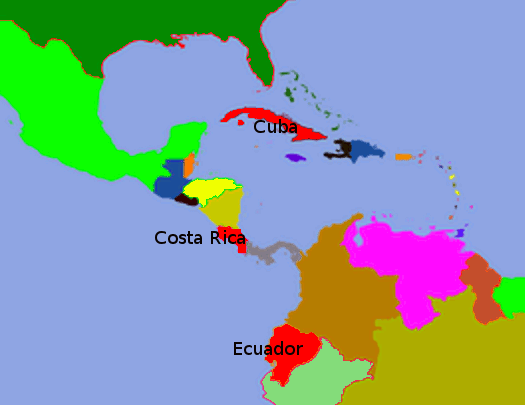
Circle the area on this map

C. Nicaragua's leftist government, a close ally of Cuba, refused to let the migrants cross the border to continue their journey to the United States where Cubans receive residency with ease under the U.S. Cuban Adjustment Act of 1996. Once they reach the U.S. border, Cubans can just show up at an established U.S. port of entry and declare their nationality.
B. Cuba and the United States are separated by 92 miles of ocean. Over the years the U.S. Coast Guard has rescued thousands of desperate Cubans from makeshift boats and returned them to their island nation.
D. Many migrants are afraid that the normalization of relations between the U.S. and Cuba will mean an imminent end to the special immigration privileges. Cuba has blamed U.S. emigration policies for drawing so many from their homeland, draining the country of badly needed professionals and working-age adults.
A. Many communities throughout the United States have significant Cuban-American populations. But, Florida has the highest concentration of Cuban-Americans in the U.S., standing out in part because of its proximity to Cuba.